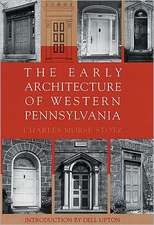Of Greater Dignity than Riches: Austerity and Housing Design in India: Culture Politics & the Built Environment
Autor Farhan Karimen Limba Engleză Hardback – 9 apr 2019
Extreme poverty, which intensified in India during colonial rule, peaked in the 1920s—after decades of imperialist exploitation, famine, and disease—a time when architects, engineers, and city authorities proposed a new type of housing for India’s urban poor and industrial workers. As Farhan Karim argues, economic scarcity became a central inspiration for architectural modernism in the subcontinent.
As India moved from colonial rule to independence, the Indian government, business entities, international NGOs, and intergovernmental agencies took major initiatives to modernize housing conditions and the domestic environment of the state’s low-income population. Of Greater Dignity than Riches traces multiple international origins of austerity as an essential ingredient of postcolonial development. By prescribing model villages, communities, and ideal houses for the working class, this project of austerity eventually reduced poverty into a stylized architectural representation. In this rich and original study, Karim explains the postwar and postcolonial history of low-cost housing as an intertwined process of global transferences of knowledge, Cold War cultural politics, postcolonial nationalism, and the politics of economic development.
As India moved from colonial rule to independence, the Indian government, business entities, international NGOs, and intergovernmental agencies took major initiatives to modernize housing conditions and the domestic environment of the state’s low-income population. Of Greater Dignity than Riches traces multiple international origins of austerity as an essential ingredient of postcolonial development. By prescribing model villages, communities, and ideal houses for the working class, this project of austerity eventually reduced poverty into a stylized architectural representation. In this rich and original study, Karim explains the postwar and postcolonial history of low-cost housing as an intertwined process of global transferences of knowledge, Cold War cultural politics, postcolonial nationalism, and the politics of economic development.
Preț: 480.23 lei
Nou
Puncte Express: 720
Preț estimativ în valută:
91.89€ • 96.46$ • 76.27£
91.89€ • 96.46$ • 76.27£
Carte disponibilă
Livrare economică 20 martie-03 aprilie
Preluare comenzi: 021 569.72.76
Specificații
ISBN-13: 9780822965695
ISBN-10: 0822965690
Pagini: 408
Ilustrații: 85 b&w
Dimensiuni: 152 x 229 x 25 mm
Greutate: 1.02 kg
Ediția:1
Editura: University of Pittsburgh Press
Colecția University of Pittsburgh Press
Seria Culture Politics & the Built Environment
ISBN-10: 0822965690
Pagini: 408
Ilustrații: 85 b&w
Dimensiuni: 152 x 229 x 25 mm
Greutate: 1.02 kg
Ediția:1
Editura: University of Pittsburgh Press
Colecția University of Pittsburgh Press
Seria Culture Politics & the Built Environment
Recenzii
“Of Greater Dignity than Richesmakes a much-needed contribution to the all-important—and still ongoing—discussion of the ‘minimum house’ in South Asia. Farhan Karim’s work complements a growing general body of interest in colonial and postcolonial architecture of the Indian subcontinent. His deft analysis of modernisms of architecture engaged by the Nehruvian state, beyond those in Chandigarh and Ahmedabad, is badly needed.” —Vikramāditya Prakāsh, University of Washington
“This book brilliantly shows the explanatory power of austerity and scarcity in the emergence of postcolonial modernism in India, without disregarding how the state and global institutions manipulated these values as a means to keep the poor docile and content with minimal needs. Thinking about a modernism of austerity helps us confront two of the worlds’ most pressing problems: Anthropocene and global economic injustice.” —Esra Akcan, Cornell University
“Such is the triumph of this fine book: it offers at once a global history of India’s architectural past and a set of timely lessons for this interconnected architectural present.” —Journal of the Society of Architectural Historians
Notă biografică
Farhan Karim is an assistant professor in the School of Architecture and Design at the University of Kansas. He has worked as an architect, interior designer, and furniture designer in Bangladesh and Australia.
Descriere
A comprehensive history of the architectural design projects that defined India’s postcolonial era. The book demonstrates how economic scarcity, an object of oppression, was re-appropriated to shape the built environment and a new national identity in India.
































